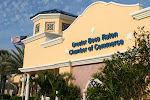Written by: Joyce Valley, NCCI Holdings, Inc.
As marketing research becomes more Web-based, it’s a luxury to gain face time with customers, but, at the same time, can make good business sense. When you know what to provide, you can turn a one-time customer into a repeat customer.
One local in-house marketing research professional and her research team complete nearly 70 in-depth research surveys each year. Their company provides services to 600 member companies, responds to nearly 500,000 customer inquiries, and hosts educational forums throughout the US. Surveys help identify areas of potential improvement.
Consumer companies with huge customer bases can sample their audiences electronically, but conducting online surveys among smaller audiences typically yields a smaller response than a personal call. Online surveys are also more difficult to control, because they are self-administered.
Many departments within the company have asked the research team to conduct surveys to determine if the company is meeting the customers’ needs. Is Customer Service helpful, quick to respond, thorough on the first call? Is the quality and format of materials that the customers receive easy to use and valuable to them? Recently, she conducted a survey for the company’s outside cafeteria vendor.
As a result of the survey, they upgraded their technology to make the cashier lines faster. They realized, from the survey, that it was a matter of some urgency.
The following seven steps are important for every successful survey.
Project planning and design—meet with the department head to determine the goals, budget, and survey methodology (telephone interviews, electronic survey, or face-to-face interviews)
Sample generation—determine the appropriate survey audience and the number of people to include
Data collection/field work—conduct a pre-test, which helps to ensure that the responses will meet survey objectives
Data processing and analysis—edit out ambiguous and inconsistent answers, and code or categorize the data to reduce responses to answers that can be tabulated and analyzed
Conclusions and report preparation—prepare a clearly written, concise executive summary and a detailed report with recommendations
Report review—conduct a final quality check of the report’s numbers and interpretations
Deployment—present the findings and discuss recommendations and action plans with the client (event or program leader)
The detail in surveys is sometimes excruciating, but that’s how to find out how you can improve. Many times, small changes have yielded big results.
Subscribe to:
Post Comments (Atom)


No comments:
Post a Comment